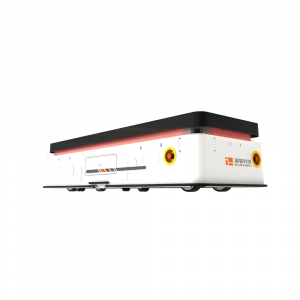OMNI Series (Omnidirectional Mobile Robot)
The OMNI series features omnidirectional mobile robots that provide exceptional flexibility and precision in movement. These robots are perfect for environments where maneuverability is crucial, such as tight spaces and complex layouts. OMNI robots can move seamlessly in any direction without needing to turn, making them highly efficient in navigating crowded areas.
Features
– Real-Time Monitoring: Tracks the status and location of each robot in real-time.
– Task Allocation: Dynamically assigns tasks based on robot availability and operational priorities.
– Performance Analytics: Provides insights into robot performance, helping to identify areas for improvement.
Overview
The OMNI series features omnidirectional mobile robots that provide exceptional flexibility and precision in movement. These robots are perfect for complex environments where maneuverability is crucial.
Depending on the model OMNI Robots offer battery life ranging from 9-11 hours.
Models and Versions
– OMNI Standard: This model offers excellent all-around performance with a battery life of up to 9 hours. Its omnidirectional capabilities allow it to navigate tight spaces effortlessly.
– OMNI Pro: Enhanced with advanced sensors and higher payload capacity, the OMNI Pro can operate continuously for up to 11 hours, making it suitable for demanding tasks.
Charging Docks
OMNI robots come with versatile workstations that support various operational needs. The charging docks are optimized for rapid charging cycles, ensuring that the robots are always ready for action.
CLOUDIA Robot Fleet Management System
Overview
CLOUDIA is an advanced fleet management system designed to optimize the deployment and operation of IPLUSMOBOT’s mobile robots. It provides real-time monitoring, task allocation, and performance analytics to ensure maximum efficiency.






